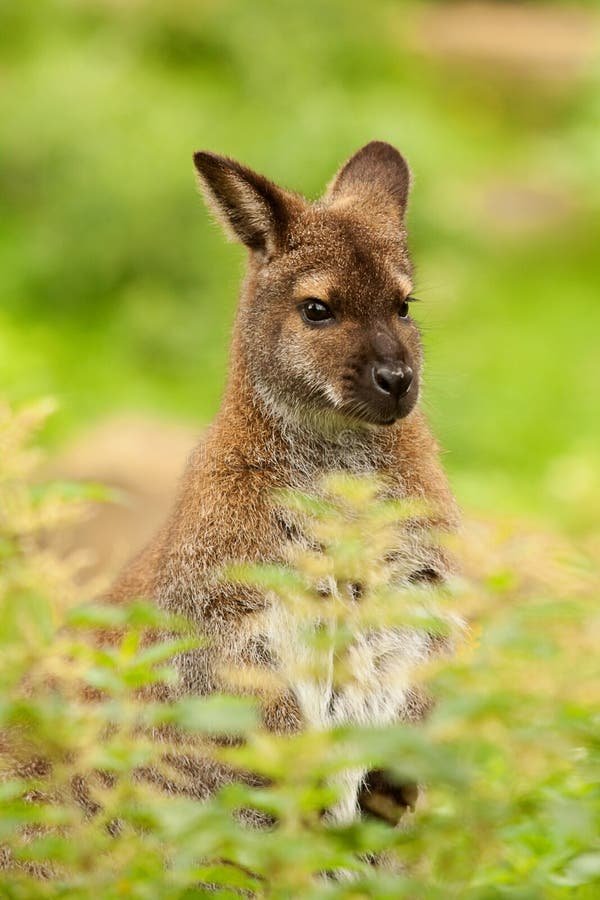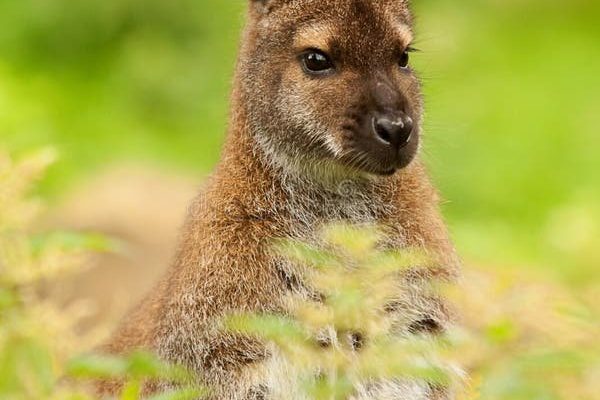
Wallabies are fascinating marsupials, often mistaken for their larger relatives, kangaroos, but they have their own distinct quirks and behaviors. Whether you’re hiking through Australian bushland or exploring the outskirts of a national park, knowing how to react when you come across a wallaby can enhance your experience and ensure both you and the wallaby stay safe. Let me walk you through the essentials of a wallaby encounter and how to make the most of it!
Understanding Wallabies: A Quick Overview
Wallabies are small to medium-sized marsupials that belong to the family Macropodidae, which translates to “big foot.” This family includes kangaroos, so you can see some family resemblances. Unlike kangaroos, wallabies are generally smaller and have a stockier build. They come in different species, each with unique colors and markings. The **Eastern Grey Wallaby** and **Black-Flanked Rock Wallaby** are just a couple of examples.
These adorable creatures are mostly herbivores, munching on grasses, leaves, and roots. They’re mostly active during dawn and dusk, which means you might spot one venturing out while the sun is rising or setting. Interestingly, wallabies are social animals and can often be found in small groups, hopping about as if they’re discussing their daily adventures.
So, now that we have a bit of background, what should you keep in mind if you happen to meet one face to face?
Stay Calm and Assess the Situation
First things first, if you encounter a wallaby in the wild, **stay calm**. These creatures can be skittish, so sudden movements can startle them. Picture yourself approaching a new friend who seems shy; you wouldn’t want to freak them out! Instead, take a moment to assess the situation. Are there just one or two wallabies? Do they seem relaxed or on alert?
Wallabies generally prefer to keep their distance from humans, so it’s best not to approach them too closely. Give them space to feel comfortable. If they seem intrigued and come closer, that’s a bonus—but don’t force it! It’s all about respecting their personal bubble.
How to Safely Observe a Wallaby
Watching a wallaby can be a magical experience, but safety is key. Here are a few tips to help you soak in the moment while keeping both you and the wallaby safe:
- Use Binoculars: If you have a pair handy, binoculars can help you get a better view without invading their space.
- Stay Quiet: Avoid loud noises that could scare them off. Instead, enjoy the sound of nature around you.
- Avoid Feeding: It might be tempting to offer food, but it’s best not to. Feeding wildlife can lead to dependency and health issues for them.
Remember, the goal is to enjoy the encounter without interfering with their natural behavior. Just like watching a movie, you want to appreciate the performance from a distance!
What If the Wallaby Approaches You?
You might be wondering, “What happens if the wallaby decides to come a bit closer?” If that happens, stay still and calm. Let the wallaby approach you without making sudden movements. It’s super important to keep your hands down by your sides and avoid direct eye contact, as that can be seen as a threat.
If the wallaby gets too close for comfort, gently and slowly back away. Think of it like giving space to a visiting friend who’s getting a little too cozy on your couch. You want to maintain a friendly vibe without getting overwhelmed.
Respecting Their Environment
When exploring areas where wallabies live, it’s crucial to respect their environment. These animals play an important role in their ecosystem by helping to maintain the grasslands. If you venture into their territory, ensure you follow these steps:
- Stay on Trails: Walking off established paths can damage habitats and disturb wildlife.
- Don’t Disturb Nests: If you come across a wallaby nest or burrow, keep your distance.
- Observe Quietly: Noise can disturb not just wallabies but many other animals in the area, so enjoy their company in silence.
By taking care of their habitat, you’re contributing to their well-being and allowing future visitors to have a chance to enjoy the same encounter!
Knowing When to Seek Help
Sometimes, you might come across a wallaby that seems injured or in distress. This can be a tough situation to navigate. Here’s what you should do if you encounter a wallaby that appears unwell:
1. **Observe from a Distance:** Ensure it’s safe before approaching. If the wallaby is injured, it might feel threatened.
2. **Contact Wildlife Rescue:** In many areas, wildlife rescue organizations can assist. They have trained professionals who know what to do.
3. **Provide Location Details:** If you call for help, share your exact location to help rescuers find the wallaby quickly.
Remember, even though you might want to help, it’s best left to the experts. They have the knowledge and tools to assist the wallaby safely.
Final Thoughts on Wallaby Encounters
Encountering a wallaby in the wild can truly be a heartwarming experience, like meeting a friendly neighbor who’s just as curious about you! By staying calm, respecting their space, and observing their behavior, you can enjoy a memorable moment in nature.
Whether you’re an avid hiker or just someone exploring the beauty of Australia, knowing how to act around these creatures enriches your connection to wildlife. Remember, it’s all about creating harmony between humans and nature. So, the next time you find yourself face-to-face with a wallaby, remember these tips, and you’ll be well on your way to having a fantastic encounter!

